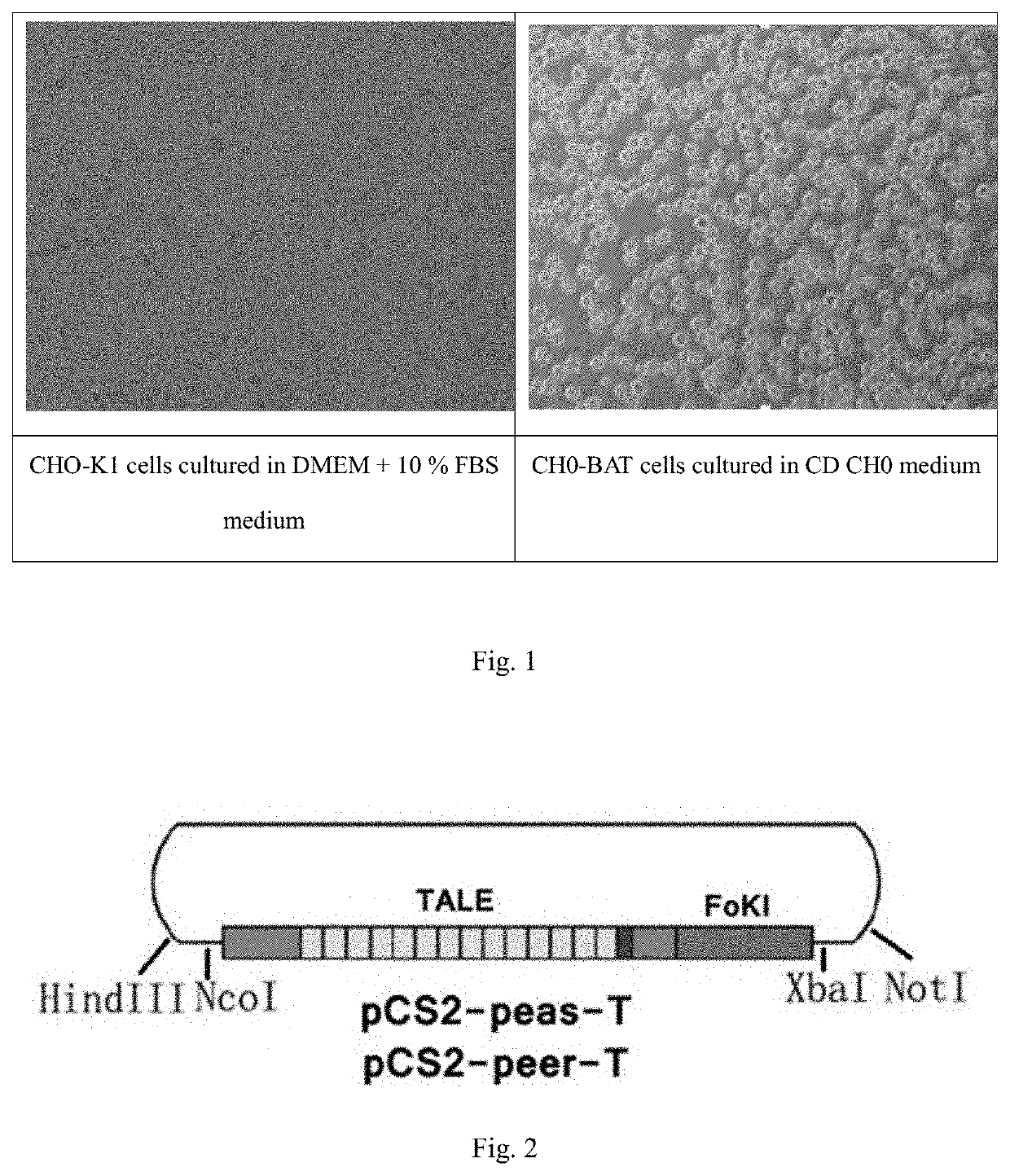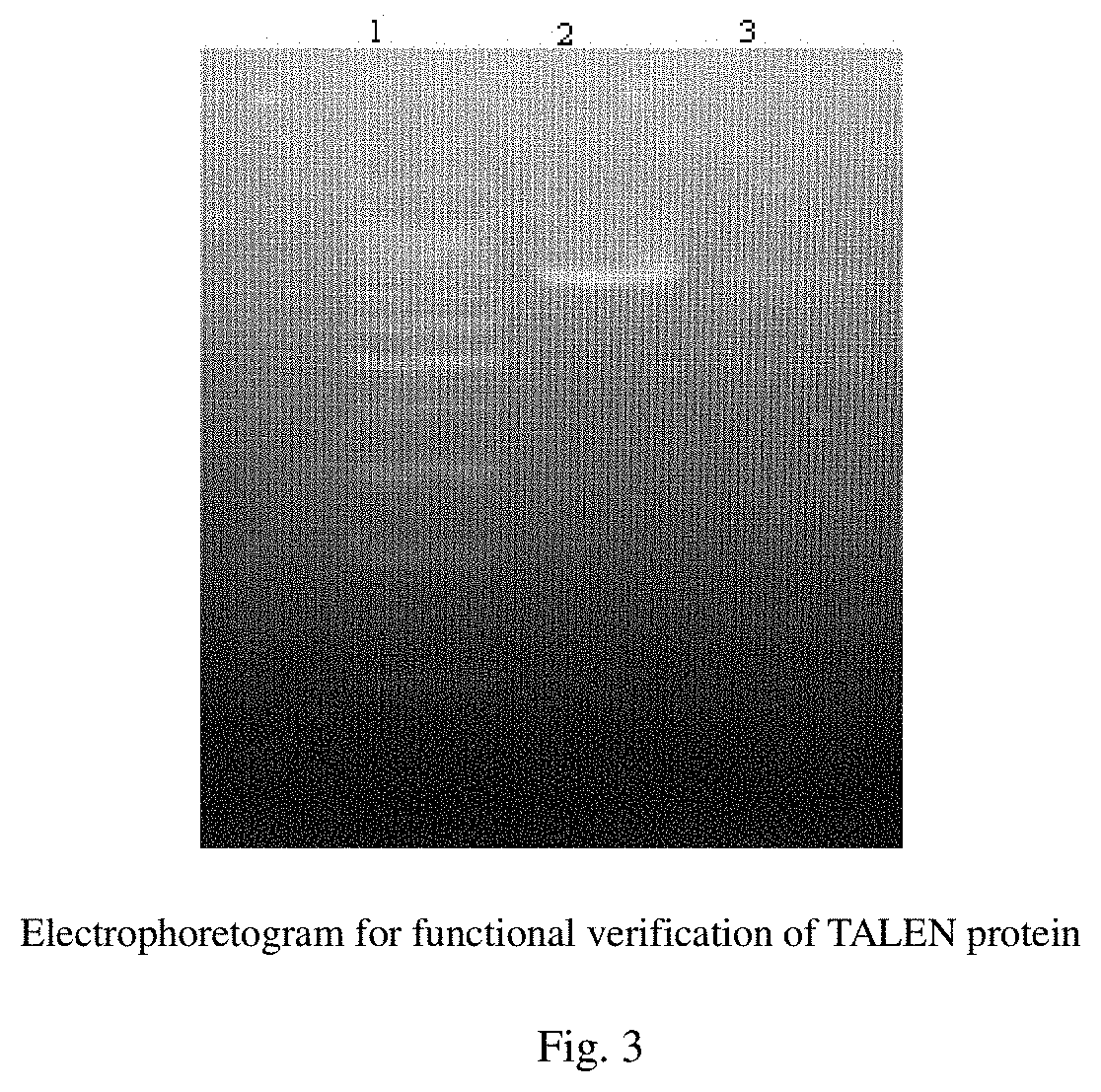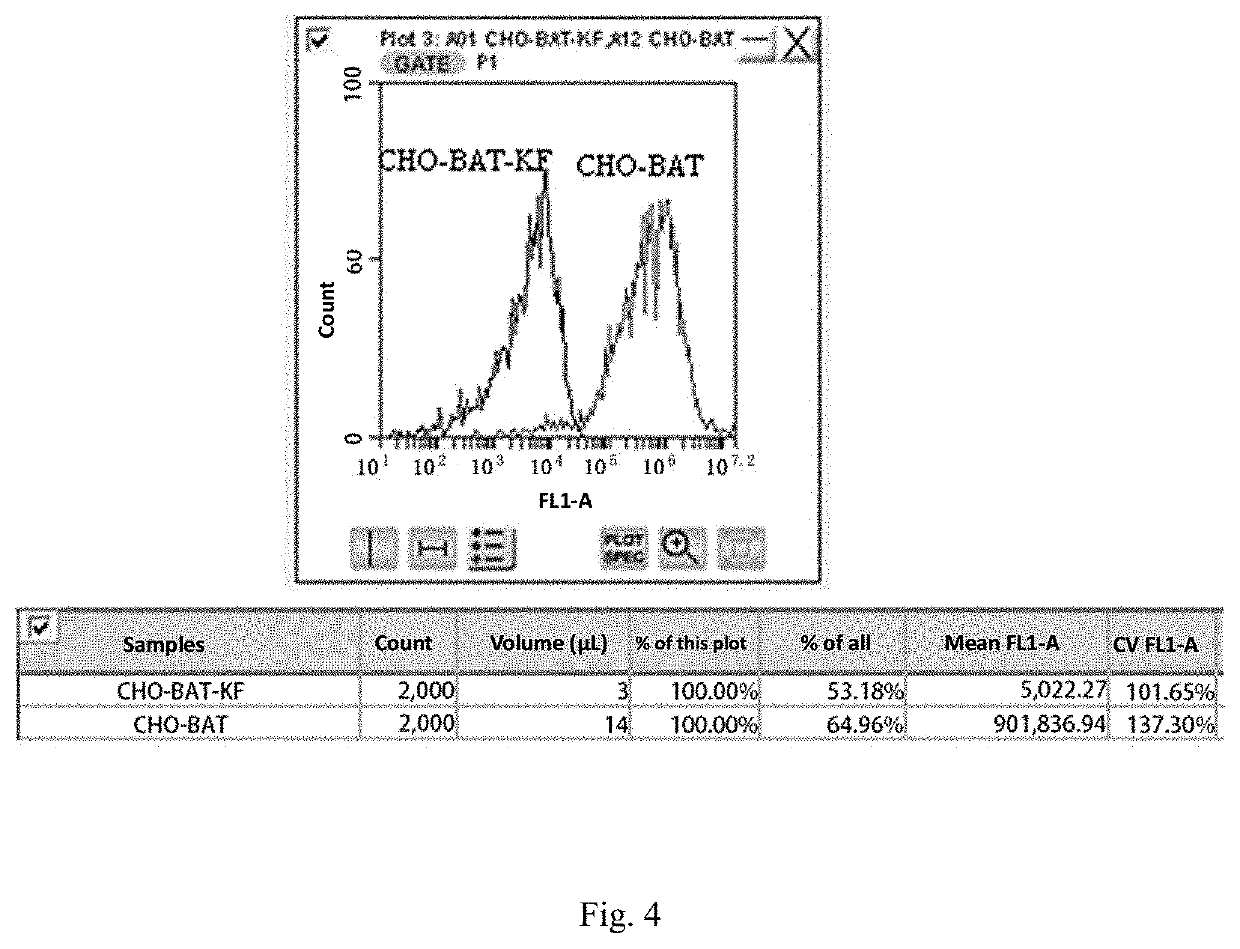Recombinant antibody having unique glycan profile produced by cho host cell with edited genome and preparation method thereof
- Summary
- Abstract
- Description
- Claims
- Application Information
AI Technical Summary
Benefits of technology
Problems solved by technology
Method used
Image
Examples
example 1
Screening of Parent Cells Adapted to Serum-Free Suspension Culture
[0090]CHO-K1 was cultured in DMEM / F12 medium containing 10% FBS. When the cell confluence reached 80%-90%, washed with PBS and digest with trypsin. Then, terminated by DMEM / F12 medium containing 5% FBS, counted and centrifuged. Resuspended the cells in DMEM / F12 medium containing 5% FBS and seeded the cells at a density of 1×105 cells / ml. When the cell confluence reached 80%-90%, washed with PBS and digest with trypsin. Then, terminated by the DMEM / F12 medium containing 2% FBS, counted and centrifuged. Resuspended the cells in the DMEM / F12 medium containing 2% FBS and seeded at a density of 1×105 cells / ml. When the cell confluence reached 80%-90%, digested the cells with trypsin according to the previous steps, terminated by the DMEM / F12 medium containing 1% FBS, and carried out passage for 3-4 generations. Mixed the CD CHO medium with DMEM / F12 at a ratio of 1:1 (V / V), adjusted the final concentration to 6 mM glutamine...
example 2
Construction of FUT8 TALEN Recombinant Plasmid
[0091]The complete genome sequence (NW-003613860) of CHO-K1 of Chinese hamster ovarian cancer cells was analyzed to obtain the FUT8 genome sequence (Gene ID: 100751648) and its cDNA (see Table 1, SEQ ID NO. 8) sequence. The FUT8 genome consists of 9 exons and 11 introns. As the activity center of FUT8 enzyme is composed of amino acids (underlined amino acid sequence of SEQ ID NO. 9) encoded by exon 1 (SEQ ID NO. 7), the left and right flanks of exon 1 of FUT8 gene were designed as TALEN target sequences. FUT8 TALEN protein L130P (SEQ ID NO. 10) and R184P (SEQ ID NO. 11) were designed according to the TALEN design guidelines and the gene editing mechanism. L130P and FokI endonucleases formed a fusion protein L130-FokI (SEQ ID NO. 14), which recognized the left-wing base L130PTN (SEQ ID NO. 3) in exon 1, and the corresponding nucleic acid sequence L130-FokIN of the fusion protein L130-FokI is shown in SEQ ID NO. 15 with a length of 19 bp. ...
example 3
Functional Effectiveness Analysis of FUT8 TALEN Protein
[0092]CEL-I enzyme is a nuclease that can recognize the mismatched bases in double-stranded DNA and cut the double-stranded DNA from the mismatches. If the target sequence is edited by FUT8TALEN, the fragment containing the target sequence amplified from the maternal genome and the fragment containing the target sequence amplified from the transformed cell genome are mixed together for denaturation and annealing, the annealed double-stranded DNA will appear base mismatch. In this case, CEL-I enzyme can cut off the annealed double-stranded DNA, and two bands appear as a result of agarose electrophoresis. 5×105 CHO-BAT cells were seeded into a 6-well plate on the day before transfection, and the medium was DMEM / F12 containing 10% fetal calf serum. Plasmids L130N and R184N were transiently transfected into cells according to the methods provided in the reagent instructions. 3 days after transfection, the cells were harvested by cen...
PUM
| Property | Measurement | Unit |
|---|---|---|
| Fraction | aaaaa | aaaaa |
| Fraction | aaaaa | aaaaa |
| Fraction | aaaaa | aaaaa |
Abstract
Description
Claims
Application Information
 Login to View More
Login to View More - R&D
- Intellectual Property
- Life Sciences
- Materials
- Tech Scout
- Unparalleled Data Quality
- Higher Quality Content
- 60% Fewer Hallucinations
Browse by: Latest US Patents, China's latest patents, Technical Efficacy Thesaurus, Application Domain, Technology Topic, Popular Technical Reports.
© 2025 PatSnap. All rights reserved.Legal|Privacy policy|Modern Slavery Act Transparency Statement|Sitemap|About US| Contact US: help@patsnap.com



